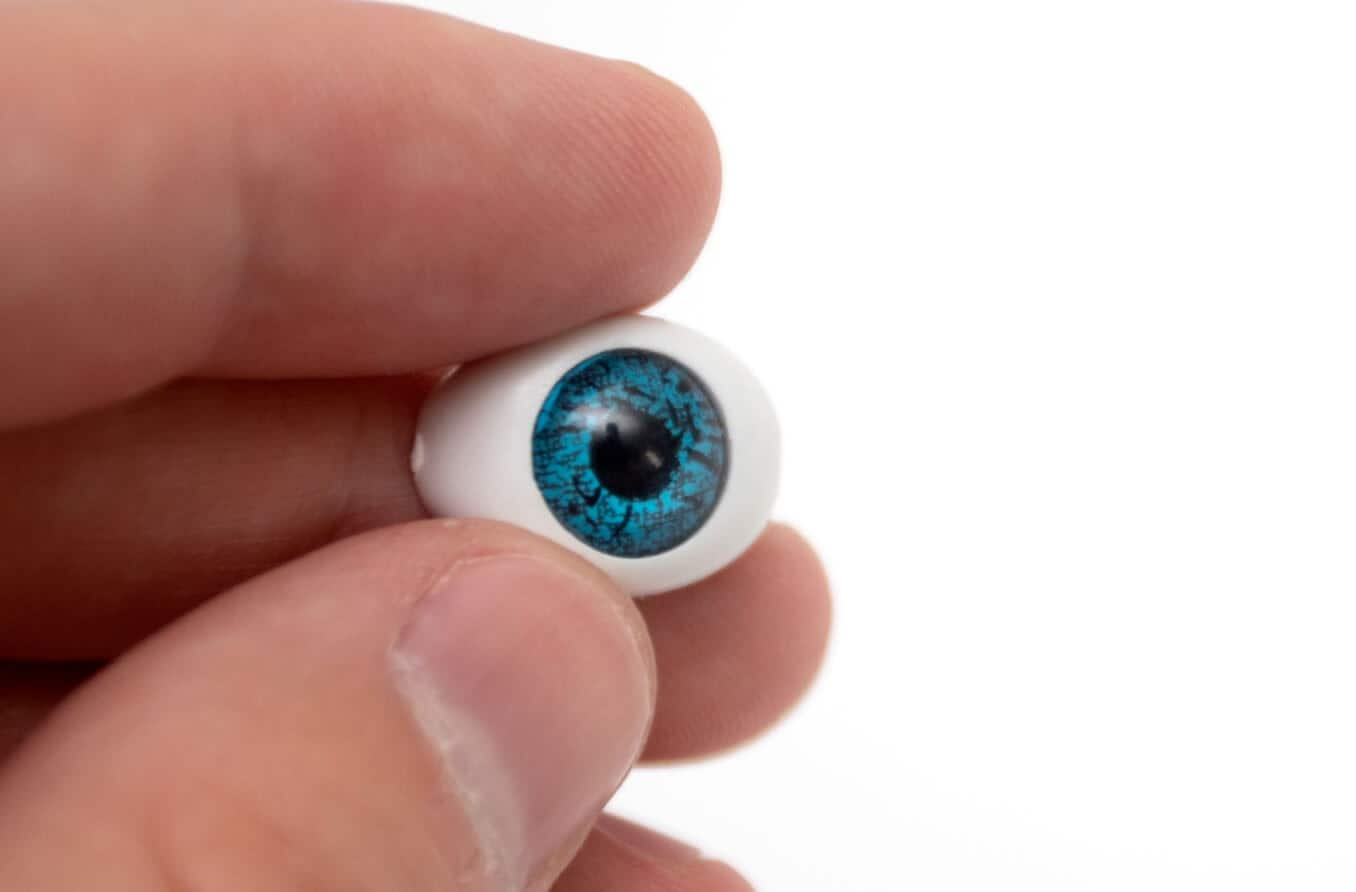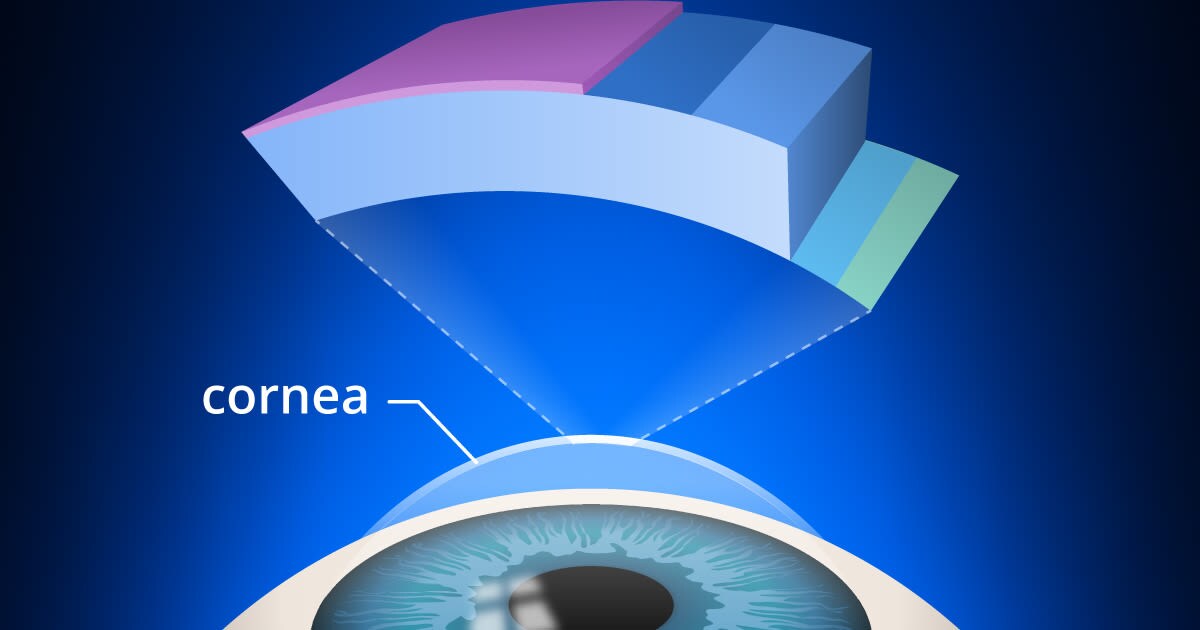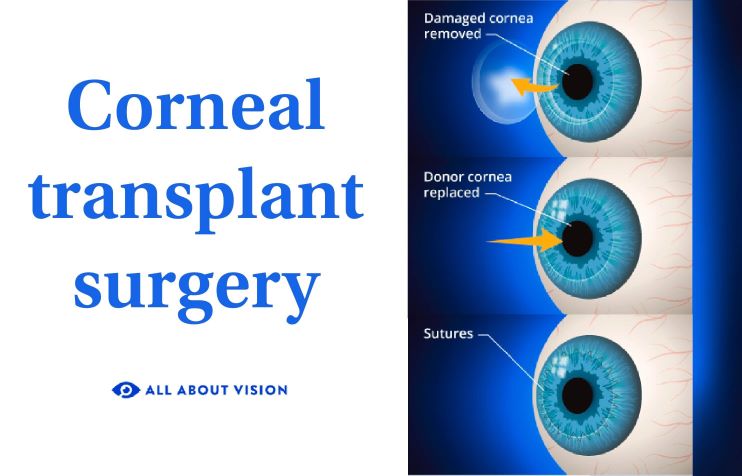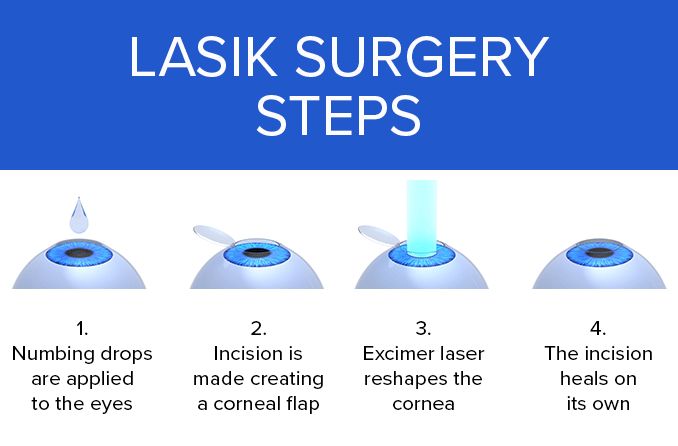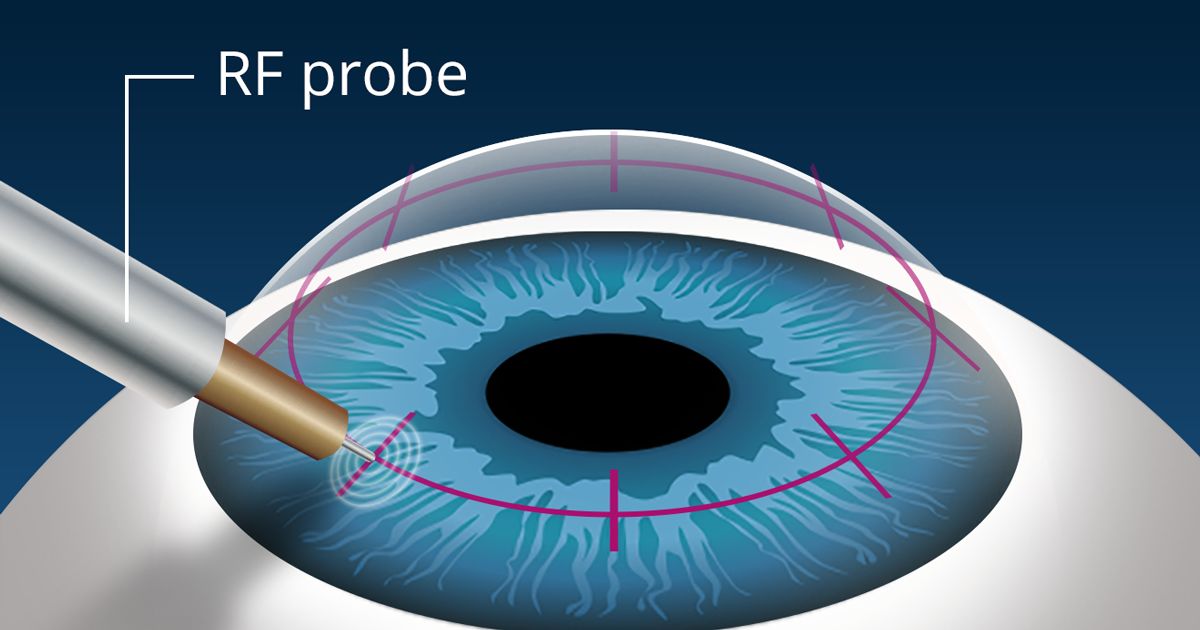What is an osteo-odonto keratoprosthesis (OOKP)?
An osteo-odonto keratoprosthesis (OOKP) is a type of prosthetic cornea. OOKP surgery, also called tooth in eye surgery, is a multi-stage procedure to create the prosthetic and implant it in the eye. The OOKP is made partly of tooth and jawbone tissue to help prevent rejection of the implant.
OOKP surgery is reserved for those with bilateral (in both eyes) corneal blindness. It is a very complex procedure, so it has several criteria for potential candidates. Despite its grim name, tooth in eye surgery can be a life-changing procedure. It can restore vision for certain patients who have no other options.
When would tooth in eye surgery be used?
OOKP surgery restores vision for patients with bilateral, end-stage ocular surface disease (OSD). The ocular surface is made up of the cornea and the conjunctiva, and OSD can occur if they are damaged. Bilateral means the damage is in both eyes, and end-stage means the damage has resulted in blindness.
There are many types of treatment for severe OSD, including limbal stem cell and corneal transplants. Tooth in eye surgery is only used when all of these options have been unsuccessful or are too high risk.
There are also many conditions that can lead to end-stage OSD. However, OOKP surgery tends to have the best outcomes when OSD is due to a few specific conditions. The most common cause among OOKP patients is severe dry eye resulting from autoimmune disease. Chemical burns on the eyes are the second-most common cause. Tooth in eye surgery may also be an option when end-stage OSD results from:
Thermal burns on the eyes
Trauma
Stevens-Johnson syndrome (SJS/TEN)
Chronic trachoma that leads to trichiasis and corneal scarring
Serious cases of exposure keratopathy
Graft-versus-host disease
Tooth in eye surgery is best for patients whose corneal blindness is due to these conditions. However, the OOKP isn't the only type of prosthetic cornea. A different prosthetic and surgery may be an option for patients with end-stage OSD resulting from other conditions.
Who is a candidate for tooth in eye surgery?
The OOKP procedure is only used in extreme circumstances, and candidates must meet certain criteria. Like with any surgery, these criteria help ensure a good outcome. The most important criteria for tooth in eye surgery include:
Bilateral corneal blindness – People who still have vision in one eye are not candidates for such a major procedure.
Exhaustion of other options – Tooth in eye surgery is only performed as a last resort after other options have failed.
Good general eye health – People who have retinal disease or damage, glaucoma, or other optic nerve damage are not ideal candidates.
Good oral and dental health – Tooth in eye surgery requires healthy tooth, jaw and cheek tissue to create the prosthetic cornea.
Mature dental arches – Younger patients whose dental arches are still developing are not candidates.
Potential candidates will need to meet with a team of specialists to find out if they are eligible. This includes speaking with the specialists about how OOKP works, as well as having a psychological evaluation. Patients need to understand and be ready for the stress, risks, possible outcomes and life-long commitment involved.
The specialists will also do a series of assessments to determine eligibility for tooth in eye surgery. These include:
A review of your ophthalmological history
A thorough eye examination to assess vision health and ensure the retina and optic nerve are in good condition
Oral and dental exams to determine tooth, bone, cheek and gum health, as well as to select a tooth for the procedure
How are eyes made with teeth?
The tooth in eye prosthetic cornea is a tiny, cylinder-shaped optical device made of a clear synthetic polymer. It is housed in living tooth, jaw and cheek tissue so the body does not reject it. The medical term for the prosthetic is osteo-odonto keratoprosthesis (OOKP). Osteo means "bone," odonto means "tooth" and kerato means "cornea."
The procedure involves extracting one tooth and some of its surrounding bone to create the OOKP, then preparing the OOKP to place it in the eye. But creating the OOKP is only one step of the procedure.
An upper or lower canine tooth is usually selected. This is because the canine teeth have the biggest and strongest root compared to other teeth. They also tend to have stronger bone holding them in place.
First, the tooth and bone are extracted as one piece. It is then sliced lengthwise and polished to create a “lamina” (a plate). A hole is then drilled into the center of the lamina to create a space for the optical device. The device is cemented into the hole, and the combination (the OOKP) is then implanted into the patient’s cheek for around three months.
During these three months, the body keeps the tooth and bone alive and allows it to form connective tissue and blood vessels. This helps ensure that the eye doesn’t reject it upon implantation.
What happens during tooth in eye surgery?
Tooth in eye surgery is performed in stages to ensure a smooth transition between the mouth and the eye. The first stage has two parts:
Preparing the tooth and optical device
Part 1 of preparing the eye
The first step is preparing the eye. A surgeon removes the top layer of the eye’s surface and replaces it with a graft of cheek tissue from the patient. This tissue is part of the mucous membrane that lines the inside of the mouth.
Usually, the tooth is extracted to create and prepare the OOKP at the same time. This is because the graft over the eye's surface and the OOKP both need time before the next step.
The graft must heal completely before it can receive and support the OOKP. Also during this time, vascularized connective tissue grows over the OOKP so it can survive in the eye.
The next stage takes place two to four months later. This stage also has two parts:
Part 2 of preparing the eye to receive the implant
Transferring the OOKP to the eye
First, the eye surgeon gently lifts the bottom portion of the graft from the surface of the eye. A hole is created in the center of the cornea to remove the iris, lens and anterior vitreous.
The OOKP is then removed from the patient’s cheek and transferred to the eye. The back of the optical cylinder is centered over the hole in the cornea, and the lamina (plate) rests on the surface of the eye. The surgeon stitches it in place and then creates a hole in the graft for the front of the optical device.
Finally, the graft is moved back into place and sutured over the prosthetic to secure it.
What happens after tooth in eye surgery?
After the procedure, the patient needs to remain lying in a face-up position for about a week. During this time, they may also be treated with systemic medications to prevent certain complications. These may include antibiotics, corticosteroids and blood pressure medication.
Follow-up visits with specialists continue for life after OOKP surgery. For the first month, follow-up visits are weekly. For the next year or so, they are monthly, then bi-monthly, and so on until the patient is fully recovered. Follow-ups must continue after this as well, but they usually don’t need to be as frequent.
Patients also need to see a prosthodontist to receive a replacement tooth for the one used for OOKP. A prosthodontist will also be able to replace or reconstruct any other affected oral tissue.
Risks and complications of osteo-odonto keratoprosthesis
Tooth in eye surgery has a very high (88.25% - 93.9%) success rate. But like with all surgery, it does come with a risk of complications. There are multiple procedures in the process, so complications may occur during, between or after each one.
Complications during OOKP surgery or between stages can include:
Corneal perforation as the eye is prepared for transplantation
Damage to teeth or jaw as the tooth is extracted
Damage to the salivary gland as the mucous membrane in the mouth is prepared for the procedure
Oral infection or scarring at the skin graft site
Root exposure in adjacent teeth
Tightness or numbness in the mouth
Complications after OOKP surgery can include:
Overgrowth or necrosis of the graft over the eye
Endophthalmitis (severe inflammation inside the eye)
Lamina resorption
Glaucoma
Vitreous hemorrhage
Tooth in eye surgery is an involved process that comes with a number of risks. But it can be a life-changing procedure for some. Speak with your eye doctor if you are interested in OOKP. They are the best starting point for learning more about the procedure and whether it may be an option for you.
Anna Barden also contributed to this article.

